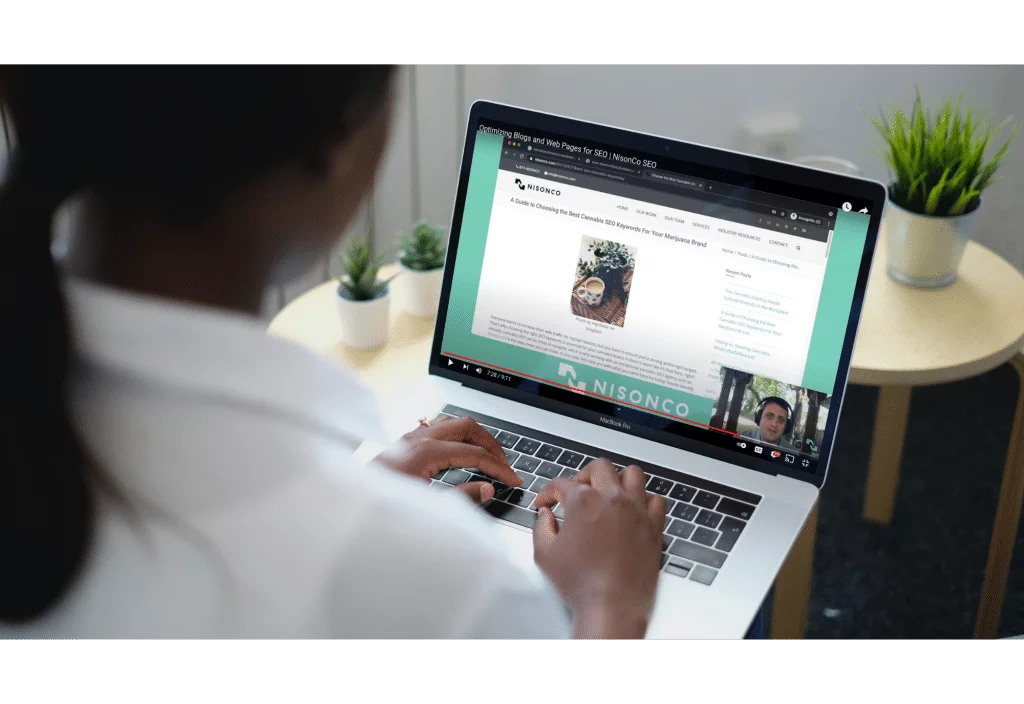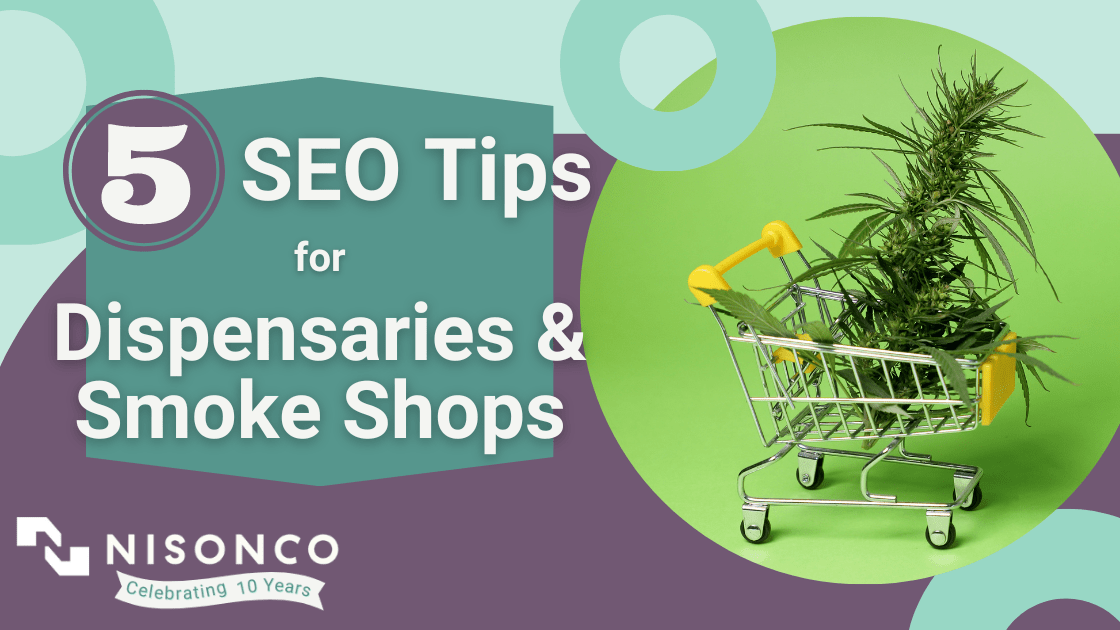If you’re new to SEO and haven’t read our previous posts on beginner cannabis SEO keyword research and beginner dispensary SEO, be sure to check those out before reading this article. However, if you’re becoming more familiar with SEO strategies and are ready to learn more, you’re in the right place.
In this video, NisonCo PR founder and president Evan Nison discusses how to optimize blog posts and web pages for SEO from an intermediate level.
When determining the contents of a web page, Google first looks at the page’s meta tags and headers. The major search engine uses both elements to figure out what information the web page provides. In this presentation, Evan talks about how to properly use search phrases, the basics of meta tags and web page headers, and why blogs are great for SEO.
See the video on SEO strategy and the accompanying article outlining the main takeaways below.
Keyword, Phrase Lists Must be Expansive and Diverse
When conducting keyword and search phrase research, make sure the list of your target keywords and phrases is wide, encompassing, and expansive. For example, to apply dispensary SEO to a CBD gummy brand, use the following phrases rather than just one:
- Where to buy CBD gummies
- CBD gummies for sale
- CBD gummies shipped nationally
Don’t determine your list just by search volume, either. Consider the intent of your prospective customer when drafting this important list of target keywords and phrases. A common mistake is when people only target keywords with high search volume, but not long-tail search phrases with less traffic (which also have higher purchasing intent), such as “where to buy wholesale chocolate CBD gummies in NJ.”
After you’ve conducted initial keyword research and have a list of target keywords and phrases, these should be used throughout your website, including blog posts and pages. The sentences in which the keywords and phrases are used should be unique and not duplicated, otherwise, Google won’t deem your website credible.
Meta tags are an SEO Must
According to SEO expert Neil Patel, meta tags are a kind of HTML tag that provides search engines with information about a specific website page. Meta tags include the meta title and meta description of the link, as it appears on a search engine results page (SERP).
In order to write an optimized page title that is relevant to the on-page content, include the keyword that gets high search volume. For instance, we use “NisonCo PR | Top Cannabis PR Firm” as a meta tag for NisonCo.com. These tags can be edited via plug-ins on WordPress. On other platforms, it can be done on the page settings.
Headers Allow Easy Reading for AI and Humans
Headers are formatted on a page or blog post by using H1, H2, H3, and H4 codes, not simply bolded text. (Check out this example on Mozilla). For example, on NisonCo.com we have an H1 header for “cannabis SEO” and an H2 header for “SEO for cannabis and CBD companies” as seen in the video. This pattern should be consistent for all of your web pages and blog posts on your website. The amount or type of header doesn’t matter as much as it used to, but having headers is important. Every page should have H1 and H2 However, don’t overrun the page with headers.
Additionally, be mindful of the header-to-text ratios. You should have a decent amount of text after headers, especially before adding another. It should look presentable.
Blogs are Blank Canvases for Boosting SEO
Starting a blog is a great way to boost website SEO. It’s like a blank canvas to add meta tags, keywords, and overall web copy because you can write about anything, especially informative and educational content that relates to your brand. Additional content provides useful information to potential customers, which helps give the Google algorithm more to learn about from your website.
Plus, different blog posts can be optimized for different keywords. Doing so gives you an opportunity to publish more specific posts to your customers because ultimately, that’s what Google wants. Use specific keywords that fit in the text of the blog. Pick several meaningful keywords that match the theme of the blog, instead of trying to stuff keywords. The sentences with keywords should not only make sense — they should also provide useful information.
Keep in mind that longer-form blogs are becoming more popular. Patel also mentions that the ideal number of keywords is 76 in an average 1800 word blog post.
If you have any questions about NisonCo’s dispensary and cannabis SEO services, learn more about how we can help you and check out some of our SEO successes here. When you work with a cannabis SEO agency that collaborates with you, you’re already on a path to success. Get started with us and get your SEO up to snuff by contacting us today!



